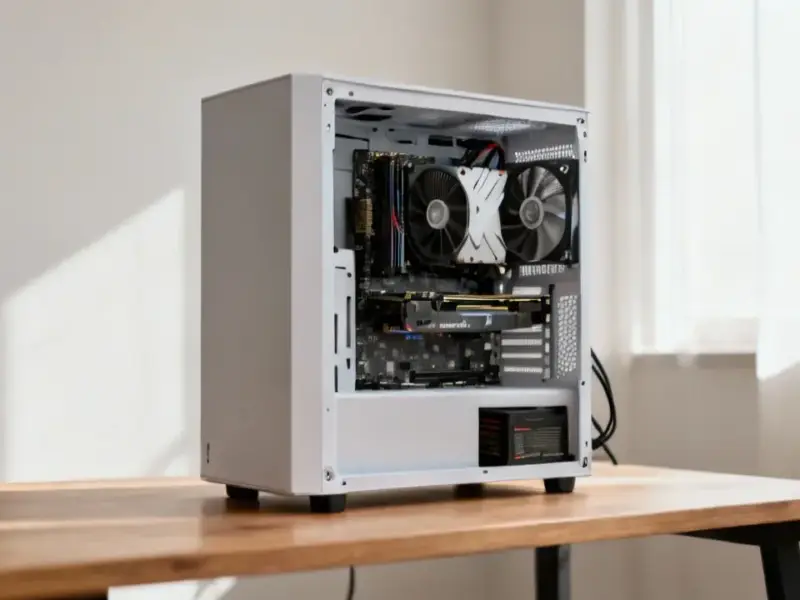According to Guru3D.com, early Cinebench R23 benchmark results for Intel’s upcoming Panther Lake laptop processors reveal modest performance figures that may disappoint those expecting significant CPU improvements. The mid-range Core Ultra X7 358H reportedly achieves approximately 20,000 points in multicore testing, while the Ultra 5 338H scores roughly 20% lower at around 16,000 points. These results suggest Intel is focusing more on graphics capabilities and AI acceleration rather than raw CPU performance, with the integrated Xe3 GPU rumored to deliver performance comparable to an NVIDIA RTX 3050. Notably, the 358H appears to run about 10% slower than the older Core Ultra 255H when both operate at 60-65 watts, indicating potential CPU performance trade-offs for improved integrated graphics efficiency. These early numbers provide insight into Intel’s strategic direction as the company prepares its next-generation mobile platform.
The CPU-GPU Balance Equation
Intel’s apparent decision to prioritize integrated graphics performance over CPU gains represents a fundamental shift in mobile processor design philosophy. The thermal envelope in modern laptops remains relatively fixed, typically between 15-45 watts for ultraportable designs and up to 65 watts for performance models. Within this constrained power budget, every watt allocated to the GPU necessarily comes at the expense of CPU performance. This balancing act becomes particularly challenging when integrating advanced graphics architectures like the rumored Xe3 iGPU, which according to the company’s announcement aims to deliver discrete-level performance. The engineering challenge lies in optimizing both CPU and GPU efficiency simultaneously while maintaining acceptable thermals and battery life.
The Technical Implications of Power Partitioning
Modern processor architectures employ sophisticated power management systems that dynamically allocate power between CPU and GPU cores based on workload demands. When Intel increases the GPU’s share of the thermal budget, it fundamentally changes how the processor behaves across different usage scenarios. Applications that heavily utilize both CPU and GPU simultaneously—such as video editing, 3D rendering, or advanced AI workloads—may experience performance bottlenecks as the system struggles to balance power between competing components. The reported 10% performance regression compared to previous-generation parts operating at similar power levels suggests Intel has made deliberate architectural choices to favor graphics performance, potentially through increased GPU power allocation or different voltage/frequency curve optimizations.
Strategic Market Positioning and Use Case Evolution
Intel’s performance trade-off strategy reflects evolving computing patterns where traditional CPU-bound tasks are increasingly supplemented or replaced by GPU-accelerated workloads. The growing importance of AI inference, real-time content creation, and gaming on thin-and-light laptops makes integrated graphics performance a more critical differentiator than incremental CPU improvements. For the majority of mainstream users who rarely push their CPUs to maximum utilization, having capable integrated graphics that can handle casual gaming, video playback, and basic content creation without requiring a discrete GPU represents a meaningful value proposition. This approach also aligns with Intel’s broader AI strategy, as many modern AI workloads benefit significantly from GPU acceleration.
Manufacturing and Yield Considerations
The performance characteristics of Panther Lake may also reflect practical manufacturing considerations. Intel’s transition to more advanced process nodes involves complex trade-offs between transistor density, power efficiency, and performance. By optimizing for graphics performance rather than pushing CPU clock speeds to their limits, Intel may be able to achieve better yields and more consistent performance across their product stack. This approach makes particular sense for mobile processors where thermal constraints often prevent sustained peak CPU performance anyway. The focus on integrated graphics efficiency could also help Intel compete more effectively in the growing market for fanless designs and ultra-thin form factors where thermal management is exceptionally challenging.
The Changing Competitive Landscape
Intel’s apparent strategy with Panther Lake reflects a broader industry trend where the traditional distinction between CPU and GPU performance is blurring. AMD’s recent APU designs have similarly emphasized balanced performance across CPU and GPU components, while Apple’s M-series processors have demonstrated the market appeal of tightly integrated CPU-GPU architectures. The reported performance figures suggest Intel is willing to accept modest CPU gains in exchange for closing the integrated graphics gap with competitors. This approach could prove strategically sound if it enables Intel to deliver compelling gaming and content creation experiences in mainstream laptops without requiring discrete graphics, potentially reducing system cost, complexity, and power consumption.




